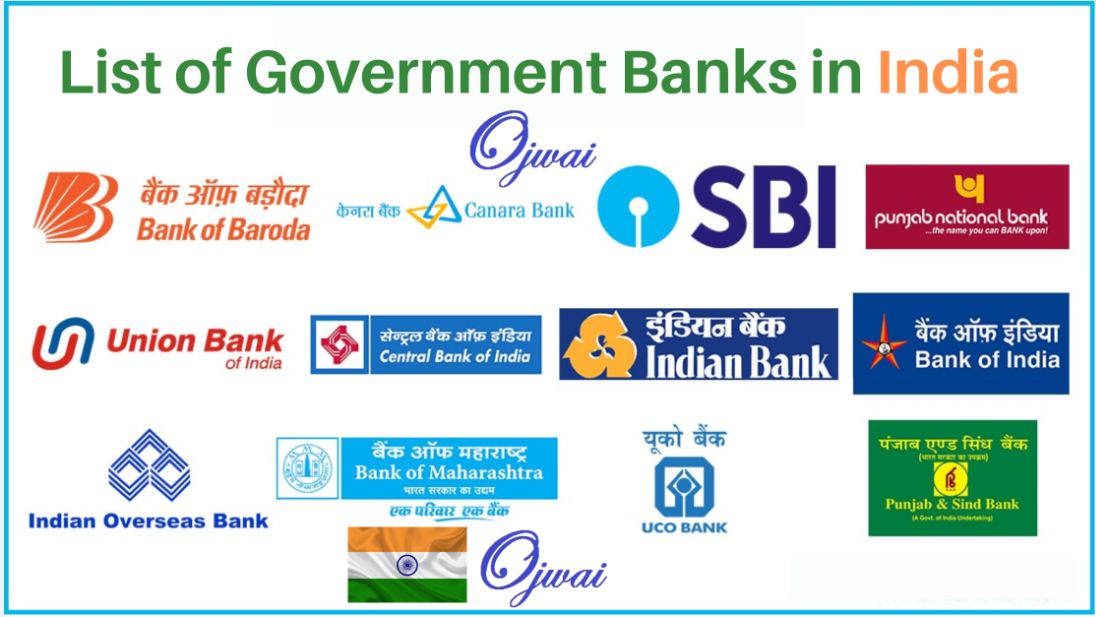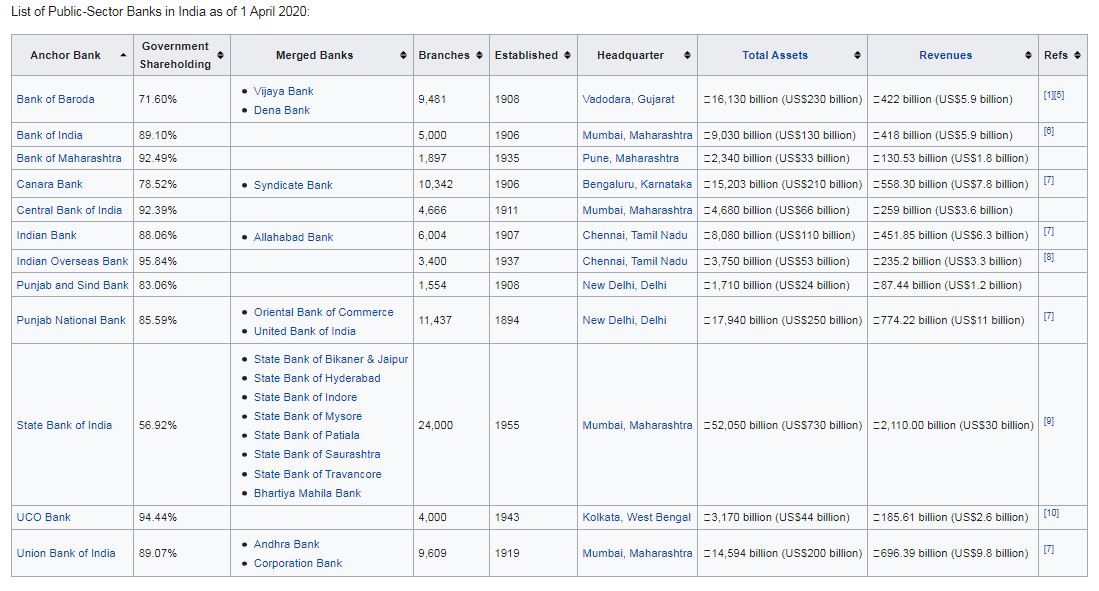In India and all other countries banks are playing an important role in terms of “Economy” as the money transactions are happening through the banks only. All we know is that The Reserve Bank of India (RBI) is the central point or banking institution and also the supreme monetary authority of India. There are 3 categories or types of commercial banks in India like Government/ Public bank, Private sector banks, Regional Rural Banks and the foreign sector banks. In this post, you’ll get the complete list of Government banks in India in 2022.
Public Sector Banks (PSBs) or nationalized banks or the Government banks in India are the important types of banks in this country. More than 50% of the stake is held by the Indian Government. Vijaya Bank, Dena Bank was merged with Bank of Baroda in April 2019. You’ll get all information about current list of Government banks in India. Also know what are the banks are merged with which banks in complete details.
How Many Government Banks In India 2022?
In this page, you’ll complete information about, old list of Government banks in India, Current list of Public Sector banks in India and list of merged banks in India.

List of Government Banks in India 2022 (Public Sector Banks in India)
We’ve searched many websites and resources in order to get the Government bank list in India. You’ll get complete information of Public sector banks or nationalized banks in India as of 1 April 2020 (announcement).
You’ll get more info about Indian government banks with revenues, Percentage of Government shareholding, headquarters, established year and more.
Government Banks in India List 2022 (Current + Merged Banks of India)
- Bank of Baroda – (Vijaya Bank + Dena Bank)
- BOI – Bank of India
- Bank of Maharashtra
- Canara Bank – (Syndicate Bank)
- Central Bank of India
- Indian Bank – (Allahabad Bank)
- Indian Overseas Bank
- Punjab and Sind Bank
- Punjab National Bank – (Oriental Bank of Commerce + United Bank of India)
- State Bank of India – (SBBJ + SBH + SBT +SBIndore + SBM + SBP + SBS + BMB)
- UCO Bank
- Union Bank of India – (Andhra Bank + Corporation Bank)
Source: Wikipedia
List of Private Banks in India
Related: Here’s the complete list of Private Banks in India .
The old list of (Public Sector Banks) Government banks in India:
There is no difference between Nationalized Bank and Public Sector Bank in India. Both terms have the same meaning.
Based on the announcement made on 30-08-2019, the number of government banks (Indian public sector banks) has come down from 27 to 12.
- Allahabad Bank
- Andhra Bank
- Bank of Baroda
- BOI – Bank of India
- Bank of Maharashtra
- Canara Bank
- Central Bank of India
- Corporation Bank
- Dena Bank
- Indian Bank
- Indian Overseas Bank
- Oriental Bank of Commerce
- Punjab & Sind Bank
- Punjab National Bank
- Syndicate Bank
- UCO Bank
- Union Bank of India
- United Bank of India
- Vijaya Bank
- IDBI Bank((77.79% government stake)
- SBI+and its five associate banks
- Bharatiya Mahila Bank
Categorization of Banks in India
In India, the banking sector is divided or categorized as two big categories like “Scheduled” and “Non-Scheduled” banks.
The scheduled banks come under the 2nd schedule of the (RBI) Reserve Bank of India Act of 1934.
The list of scheduled banks in India categorized as:
- Nationalized Banks
- Foreign Banks
- Regional Rural Banks
- State Bank of India and Groups
- Other Private Sector Banks
What are the Reasons for the Nationalization of Banks?
- Social Welfare
- Developing Banking Habits
- Expansion of Banking Sector
- Controlling Private Monopolies
- Reduce Regional Imbalance
- Prioritizing Sector Lending
Also Read: How to Earn from Neobux?
Final Thoughts
I hope you have got all the information about the list of Government banks in India.
Thanks for reading and please share this post.

Leave a Reply